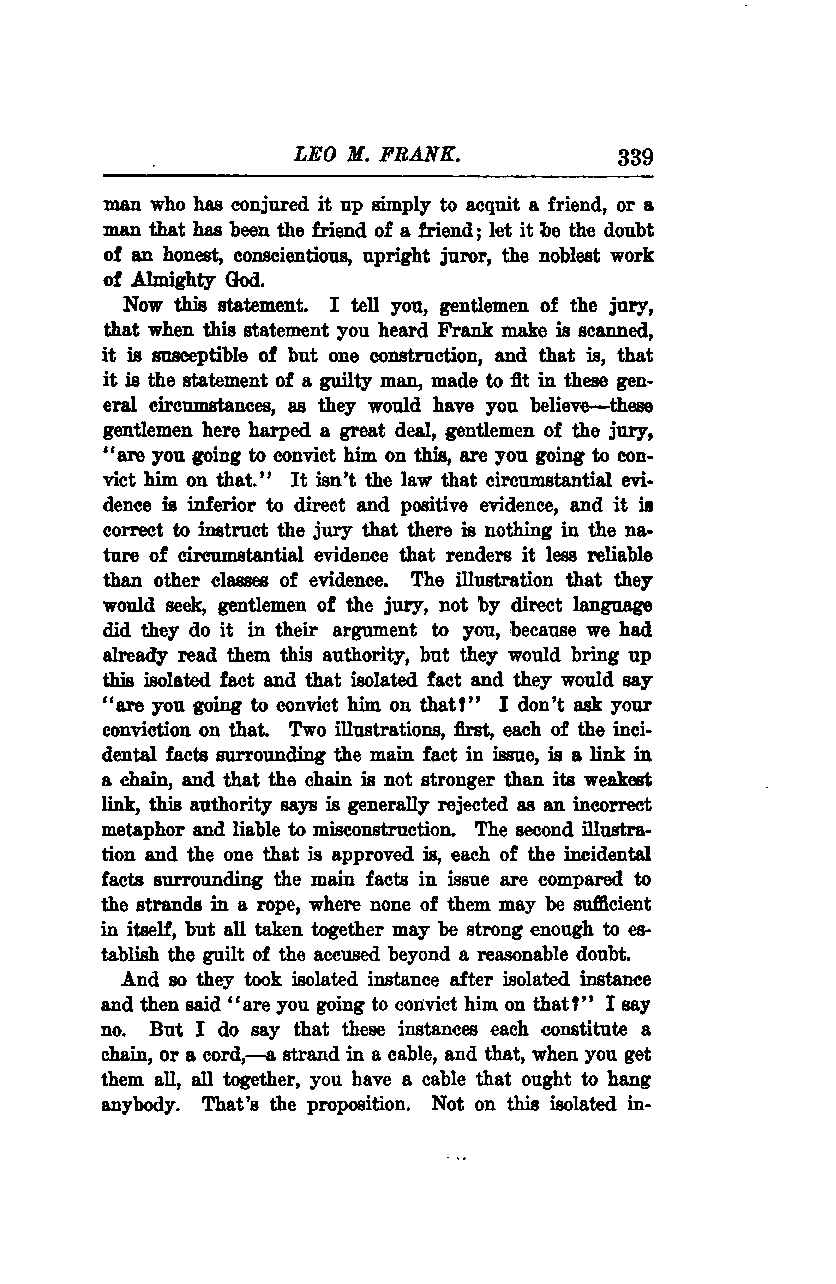Reading Time: 3 minutes [413 words]

Here is the translated text as follows:
LEO M. FRANK, 339
Let it be the doubt of a man who has conjured it up simply to acquit a friend, or a man that has been the friend of a friend; let it be the doubt of an honest, conscientious, upright juror, the noblest work of Almighty God.
Now, gentlemen of the jury, I tell you that when this statement you heard Frank make is scanned, it is susceptible of but one construction, and that is, that it is the statement of a guilty man, made to fit in these general circumstances, as they would have you believe. These gentlemen here harped a great deal, gentlemen of the jury, "Are you going to convict him on this, are you going to convict him on that?" It isn't the law that circumstantial evidence is inferior to direct and positive evidence, and it is correct to instruct the jury that there is nothing in the nature of circumstantial evidence that renders it less reliable than other classes of evidence.
The illustration that they would seek, gentlemen of the jury, not by direct language did they do it in their argument to you, because we had already read them this authority, but they would bring up this isolated fact and that isolated fact and they would say, "Are you going to convict him on that?" I don't ask for your conviction on that. Two illustrations: first, each of the incidental facts surrounding the main fact in issue is a link in a chain, and that the chain is not stronger than its weakest link, this authority says is generally rejected as an incorrect metaphor and liable to misconstruction. The second illustration and the one that is approved is, each of the incidental facts surrounding the main facts in issue are compared to the strands in a rope, where none of them may be sufficient in itself, but all taken together may be strong enough to establish the guilt of the accused beyond a reasonable doubt.
And so they took isolated instance after isolated instance and then said, "Are you going to convict him on that?" I say no. But I do say that these instances each constitute a chain, or a cord—a strand in a cable, and that, when you get them all together, you have a cable that ought to hang anybody. That's the proposition. Not on this isolated instance alone, but on the cumulative effect of all the evidence presented.